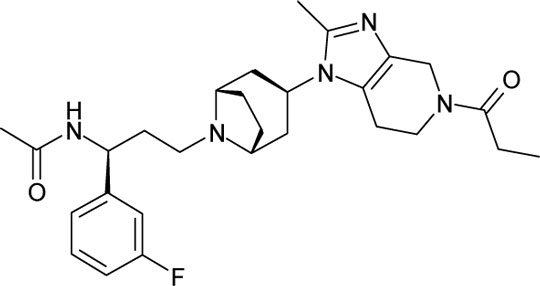Print version
Search Pub Med
Blockade of the Human Immunodeficiency Virus (HIV)-1 co-receptor CCR5 with novel antagonists reduces neointimal development in a model of human saphenous vein graft disease Coronary artery bypass surgery commonly utilises the long saphenous vein, which is prone to atheroma development leading to clinically significant levels of stenosis and failure (Motwani & Topol 1998). The chemokine receptor CCR5 is linked to atherosclerotic disease in mouse models and human studies therefore we hypothesised an involvement of CCR5 and high affinity ligands MIP-1α, MIP-β and RANTES in vein graft atherosclerosis. Expression and localisation of CCR5 and ligands MIP-1α, MIP-1β and RANTES in normal and failed graft saphenous vein was characterised by qRT-PCR and dual-labelling fluorescence immunohistochemistry. A role for CCR5 in vein graft intimal hyperplasia was investigated using saphenous vein culture (Porter, 2002). Segments were cultured with CCR5-specific antagonists maraviroc (Dorr et al., 2005) and PF-232796 (figure 1) (1 μM) or vehicle control. Neointimal area was expressed as a percentage of total intimal and medial area.

Figure 1: Structure of PF-232796
Increased mRNA expression of CCR5, MIP-1β and RANTES was detected in graft vein compared to normal vein. This additional expression of CCR5 was localised to atherosclerotic plaque, where co-localisation was seen between immunoreactivity for CCR5 and intimal smooth muscle cells. A similar result was found for ligands MIP-1α, MIP-1β and RANTES. In saphenous vein culture, development of neointimal thickening was significantly inhibited by co-culture with CCR5 antagonist PF-232796 (median±IQR: uncultured 6.7±6.9%; vehicle 11.3±18.0%; PF-232796 6.3±5.7%; n = 9, P<0.01, Friedman’s test). CCR5 and ligand mRNA expression was detected in cultured vein and immunoreactivity for both receptor and ligands was localised to neointimal smooth muscle cells. In conclusion the presence of CCR5 and its ligands MIP-1α, MIP-1β and RANTES in failed graft vein suggests a role in disease pathogenesis. This is supported by in vitro studies suggesting a role for CCR5 in development of vein intimal hyperplasia.
Dorr P et al., (2005). Antimicrob. Agents Chemother., 49, 4721-4732.
|
|

